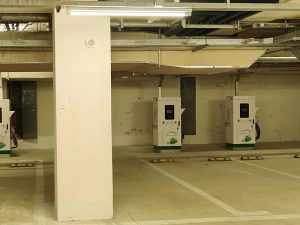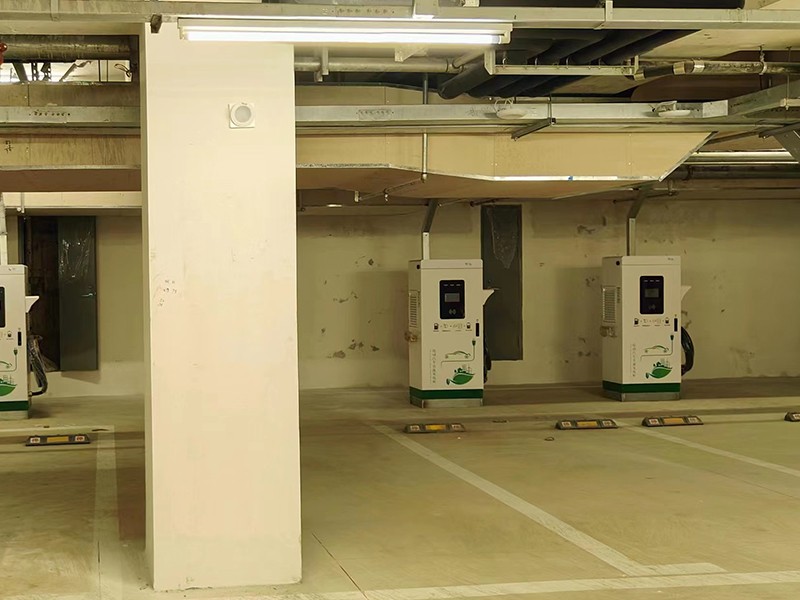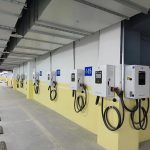Introduction
Electric vehicle owners increasingly want faster charging solutions, leading many to ask: Can I install a Level 3 charger at home? While Level 3 DC fast chargers are common at public stations, residential installations face major hurdles. This guide breaks down the reality of owning a Level 3 charger at home, including costs, infrastructure demands, and viable alternatives.

What is a Level 3 Charger?
A Level 3 charger, also called a DC Fast Charger (DCFC), delivers 50-350 kW of power, charging an EV battery to 80% in under 30 minutes. Unlike Level 1 (120V) or Level 2 (240V) home chargers, Level 3 units use direct current (DC) to bypass the car’s onboard converter, enabling ultra-rapid charging.
Key Differences:
- Requires 480V three-phase power (vs. 240V single-phase for Level 2).
- Hardware costs 10-20x more than residential chargers.
- Typically used for commercial fleets or highway stations.
Why Installing a Level 3 Charger at Home is Nearly Impossible
1. Electrical System Limitations
Most homes lack three-phase electrical service, which is mandatory for Level 3 chargers. Upgrading to 480V power involves:
- Utility company approvals.
- A new transformer and grid connection (cost: 15,000–80,000).
- Heavy-duty wiring and permits.
2. Prohibitive Costs
- Hardware: Commercial-grade Level 3 chargers like the Tesla Supercharger or ABB Terra HP cost 20,000–100,000.
- Installation: Certified electricians and industrial-grade components add 10,000–30,000.
3. Space and Safety Concerns
Level 3 chargers require 10–15 sq. ft. of space, dedicated cooling systems, and compliance with strict fire codes—challenges for most residential properties.
Practical Alternatives to a Level 3 Charger at Home
If a Level 3 charger at home isn’t feasible, consider these solutions for faster charging:
1. High-Powered Level 2 Chargers
- 80-Amp Chargers: Devices like the Grizzl-E Ultra (19.2 kW) add ~35 miles of range per hour.
- Cost: 1,000–2,500 (hardware + installation).
2. Battery-Buffered Systems
The SparkCharge HomeStation pairs a Level 2 charger with a battery pack to temporarily boost charging speeds during peak demand.
3. Future-Ready Electrical Upgrades
Install a 400-amp panel or pre-wire for DC charging to prepare for emerging technologies like 800V home chargers.
When Does a Level 3 Charger at Home Make Sense?
- Multi-EV Households: High-income families with 3+ EVs and a dedicated power substation.
- Off-Grid Homes: Properties with industrial solar arrays and battery storage (e.g., Tesla Powerwall x 10).
- Fleet Owners: Businesses charging delivery vans or trucks overnight.
The Future of Home DC Fast Charging
Emerging tech could make Level 3 chargers at home more accessible:
- 800V EV Architectures: Cars like the Hyundai Ioniq 5 and Kia EV6 support faster charging with lower voltage.
- Bidirectional Chargers: Systems like Ford Intelligent Backup Power may integrate DC charging with home energy storage.
Key Takeaways
- A Level 3 charger at home is extremely rare due to cost, power needs, and safety regulations.
- Level 2 chargers remain the most practical option for 95% of households.
- Always consult a certified EV installer before planning major electrical upgrades.
FAQ
Q: How much does a Level 3 charger cost for a home?
A: Total costs range from 50,000–150,000, including permits, hardware, and grid upgrades.
Q: Can I modify a public Level 3 charger for home use?
A: No—commercial units require industrial power infrastructure and aren’t certified for residential safety standards.
Q: What’s the fastest home EV charger available today?
A: High-amperage Level 2 chargers like the ClipperCreek HCS-D80 (80A, 19.2 kW) offer the best speed for most homes.


